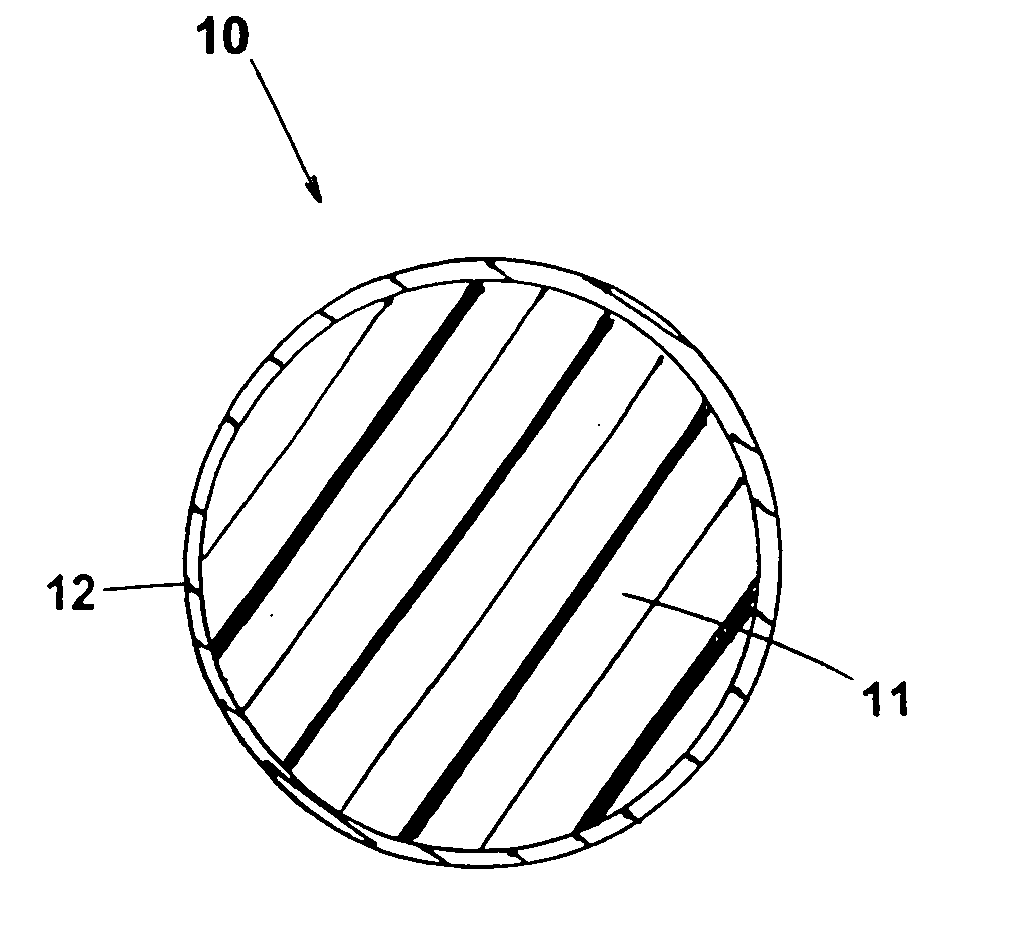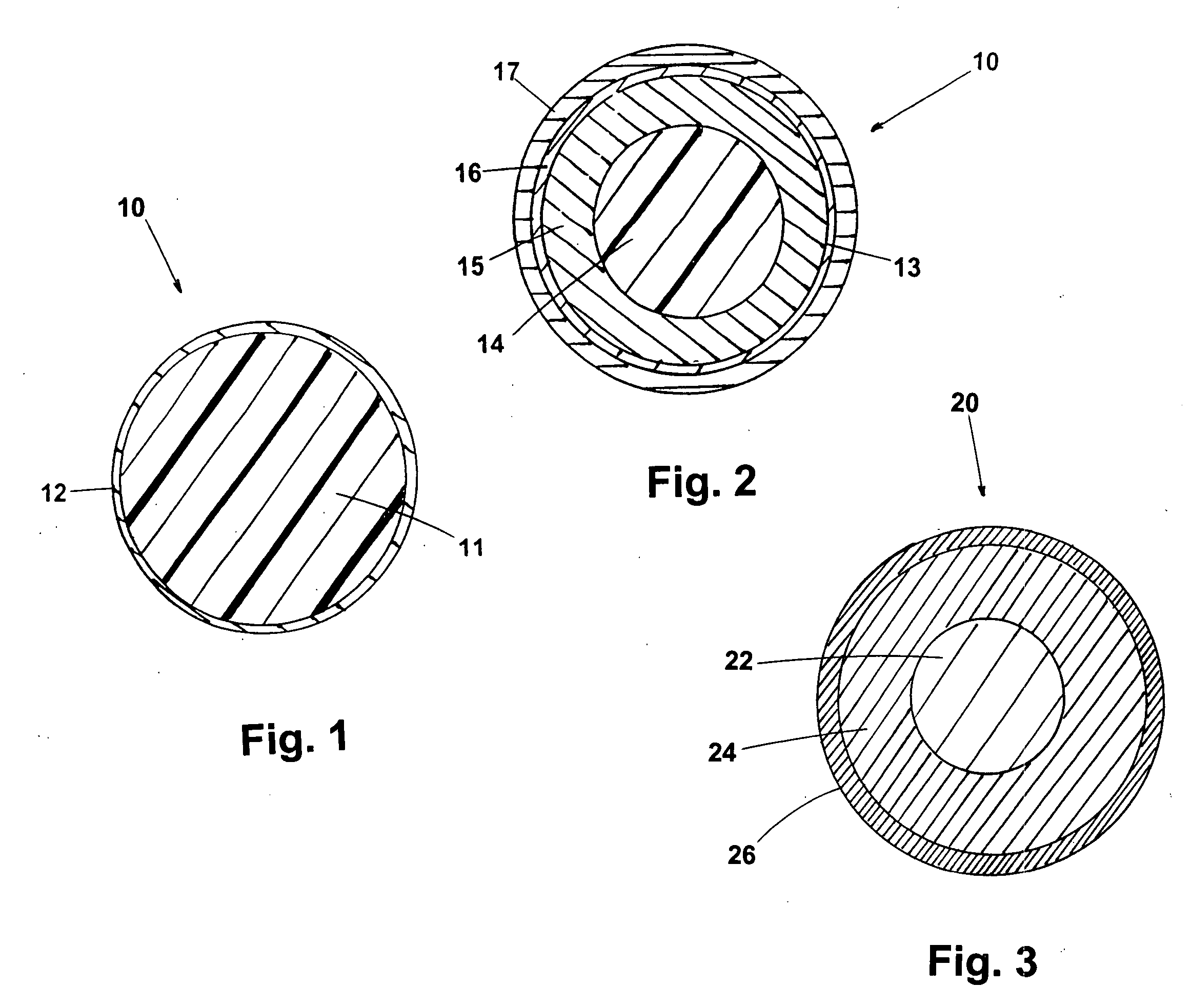Infrared heating method for creating cure gradients in golf balls and golf ball cores
a heating method and golf ball technology, applied in the field of infrared heating method for creating cure gradients in golf balls and golf ball cores, can solve the problems of lack of “touch”, difficult control around the green, and difficulty in manufacturing of golf balls
- Summary
- Abstract
- Description
- Claims
- Application Information
AI Technical Summary
Benefits of technology
Problems solved by technology
Method used
Image
Examples
Embodiment Construction
[0019] The present invention presents a golf ball core and the method of creating gradients in the skin of the core wherein a three layer like core is produced. The method of the invention would work equally as well with one-piece balls as described in U.S. Pat. No. 6,162,135, multi-layer core balls or a ball made with a laminated construction as described in U.S. Pat. No. 6,056,842, which is incorporated by reference herein in its entirety.
[0020] As previously stated, in the manufacture of golf ball cores, all cores have a slight cure gradient that is created by the very nature of the cure conditions, which is heating from the outside in. The cure conditions are optimized to create the cure with the most uniformity for the given construction. If cure gradients that have large differences were desired or if materials that are not typical of the art were desired, then they could be achieved with high molding temperatures for long periods of time (i.e. 175° C. for 30 minutes). Extend...
PUM
| Property | Measurement | Unit |
|---|---|---|
| thickness | aaaaa | aaaaa |
| skin gradient thickness | aaaaa | aaaaa |
| diameter | aaaaa | aaaaa |
Abstract
Description
Claims
Application Information
 Login to View More
Login to View More - R&D
- Intellectual Property
- Life Sciences
- Materials
- Tech Scout
- Unparalleled Data Quality
- Higher Quality Content
- 60% Fewer Hallucinations
Browse by: Latest US Patents, China's latest patents, Technical Efficacy Thesaurus, Application Domain, Technology Topic, Popular Technical Reports.
© 2025 PatSnap. All rights reserved.Legal|Privacy policy|Modern Slavery Act Transparency Statement|Sitemap|About US| Contact US: help@patsnap.com


